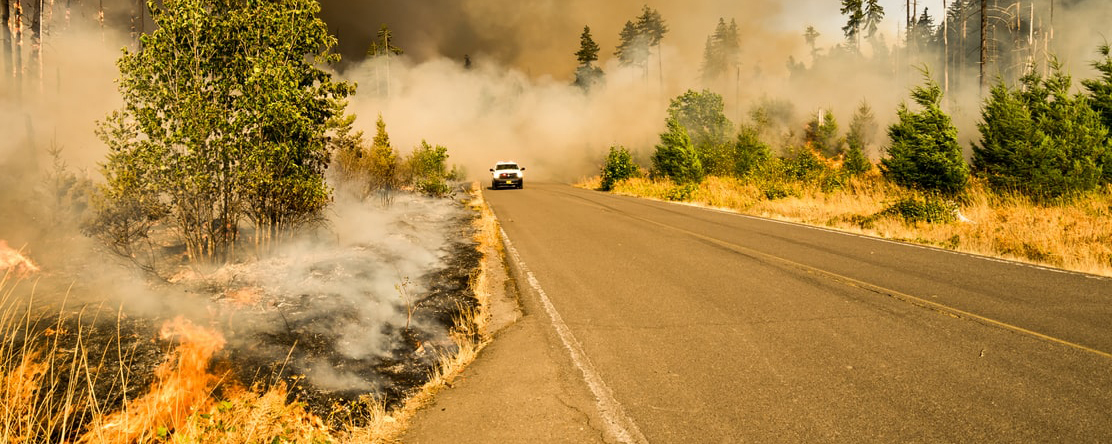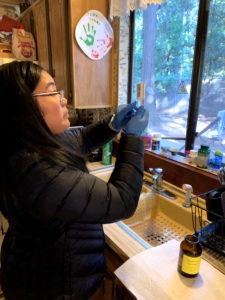
Update
Fire and Water Study: Drinking Water in Homes Affected by the 2018 Camp Fire
-
Focus Areas
Environmental Health -
Issues
Wildfires & Extreme Heat

The Camp Fire in November 2018 burned the towns of Paradise and Magalia, California, and nearby areas, destroying nearly 14,000 homes but leaving about 1,700 standing homes. Returning residents reported odors and an unpleasant taste in the drinking water. Testing by the local utilities identified benzene and other VOCs at high concentrations in some parts of the public water distribution systems.
Led by Gina Solomon, former director of PHI’s Achieving Resilient Communities (ARC) and PHI’s Science for Toxic Exposure Prevention, in collaboration with PHI’s Tracking California team, the Fire and Water Study measured drinking water contaminants in household tap water in the Camp fire burn zone. The study collected information to inform the recovery and to prevent future drinking water issues after wildfires.
 By 2022, the team had completed the study of nearly 10 percent of the standing homes in the affected area. The individual household results were returned to participants, two public meetings were held (one virtually) to present the results to the community, and three research papers were published on the study and the results.
By 2022, the team had completed the study of nearly 10 percent of the standing homes in the affected area. The individual household results were returned to participants, two public meetings were held (one virtually) to present the results to the community, and three research papers were published on the study and the results.
Project summary
The Fire and Water Study measured drinking water contaminants in household tap water in homes affected by the November 2018 Camp Fire in Paradise, California. The principal findings of the project were:
- Benzene was only found at two homes (out of 136 tested) and the levels were very low, suggesting that the benzene contamination had improved significantly in the months between the fire and when the testing was done or was never present in the water serving standing homes.
- Our analysis of data from the water provider showed that benzene contamination was present in drinking water in nearly 30% of pipes to destroyed structures and only 2% of pipes to standing homes after the fire.
- We found the cancer-causing chemical methylene chloride in the tap water of nearly 20% of homes, including some above regulatory limits. . Detections were correlated with greater distance from the water meter to the tap, longer stagnation time of water in the pipes, and the presence of a destroyed structure (other than the tested home) on the same service connection.
- Specialized laboratory chemistry on the water samples identified multiple chemicals associated with combustion. When the data were linked to chemicals produced from burning various kinds of plastic pipes or other burning materials (such as wood, tires, and waste), chemicals found in the water were associated with a variety of sources, indicating that smoke from all sources was pulled into the water pipes during the fire and adhered to the surface for many weeks or months.
- Returning individual results to study participants after a disaster poses special challenges due to population displacement, multiple sources of trauma, and the need to communicate complex scientific issues. The team developed a method to explain results to study participants and deployed it rapidly so people got their results within less than a month of the testing.
Background
Wildfires have been an increasing challenge in California in recent years due to drought, climate change and other factors. The fires have caused enormous loss of life and property, severe air quality impacts, challenges of clean-up and debris management, mental health stress, and disruption of community. An unanticipated problem appeared after several recent California fires: the contamination of drinking water by high levels of volatile organic compounds (VOCs), including the known carcinogen, benzene. VOC contamination was first reported after the Tubbs Fire in Santa Rosa, California in 2017. The water contamination in Santa Rosa affected mostly vacant lots and only 13 standing homes. In contrast, after the Camp Fire in November 2018, approximately 1700 homes were still standing in the fire zone, and contamination of the water was widespread.
Project activities and timeline
In Phase 1 (October 2019), the study team collected tap water samples from about 136 homes served by the two local water utilities. The water was tested for over 120 VOCs, including benzene. Residents of these homes also participated in a survey focused on drinking water and health symptoms. In November 2019, study participants received their individual test results, and a community meeting was held to provide updates and share initial summary results.
Phase 2 (November 2019 – May 2020) involved additional sampling at 10 homes with the highest VOC levels from Phase 1 testing. The water was tested at U.C. Davis for a much larger number of chemicals. The final study results were shared at a community meeting in 2021 and through scientific publications
Partners and funder
The Fire and Water Study is being implemented in collaboration with researchers in the Department of Epidemiology and Biostatistics at UCSF, the UC Davis Environmental Health Sciences Center, and PHI’s Tracking California. Laboratory analyses were conducted by BC Laboratories in Bakersfield, CA, Exelchem Laboratory in Rocklin, CA, and the Department of Civil and Environmental Engineering, UC Davis. The study was funded by the National Institute of Environmental Health Sciences (NIEHS) of the National Institutes of Health (NIH) under Award Number R21ES031501.
Program contact
If you have questions about the study, please contact:
Gina Solomon, M.D., M.P.H.
Principal Investigator
Gina.Solomon@phi.org
Study Materials
Scientific Publications
- Draper W. Li N, Solomon G, Heaney Y, Crenshaw R, Hinrichs R, Chandrasena, RE. Organic Chemical Contaminants in Water System Infrastructure Following Wildfire. Environ Sci and Technol Water. 2022. https://doi.org/10.1021/acsestwater.1c00401.
- Von Behren J, Wong M, Morales D, Reynolds P, English PB, Solomon G. Returning Individual Tap Water Testing Results to Research Study Participants after a Wildfire Disaster. Intl J Environ Research and Public Health. 19(2), 2022. https://pubmed.ncbi.nlm.nih.gov/35055730/
- Solomon GM, Hurley S, Carpenter C, Young T, English P, Reynolds P. Fire and Water: Assessing Drinking Water Contamination After a Major Wildfire. Environ Sci and Technol Water. 1(8):1878-1886, 2021. https://doi.org/10.1021/acsestwater.1c00129.
In the News
See selected coverage of the study in The Oroville Mercury-Register, Bloomberg News and KQED.
Related Links
More Updates
Work With Us
You change the world. We do the rest. Explore fiscal sponsorship at PHI.
Support Us
Together, we can accelerate our response to public health’s most critical issues.
Find Employment
Begin your career at the Public Health Institute.



